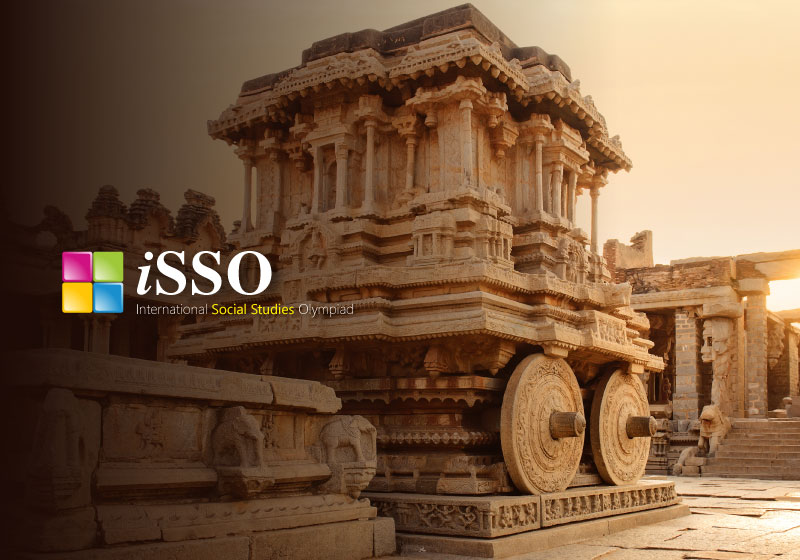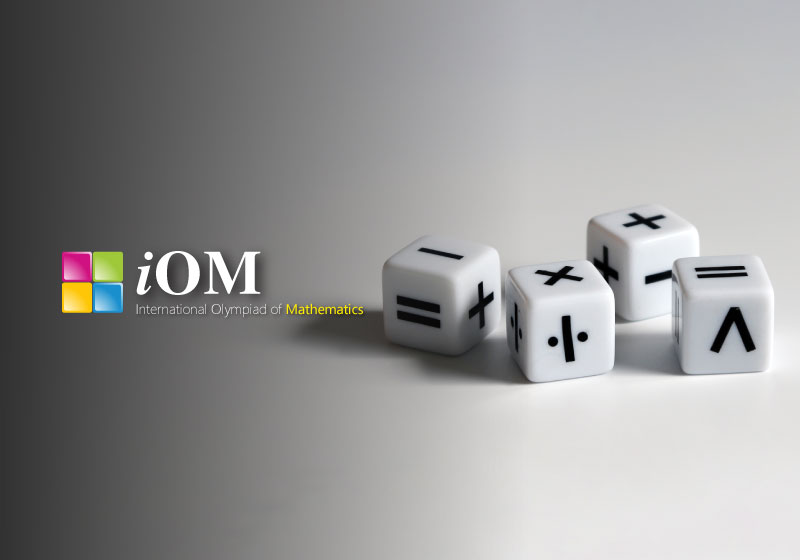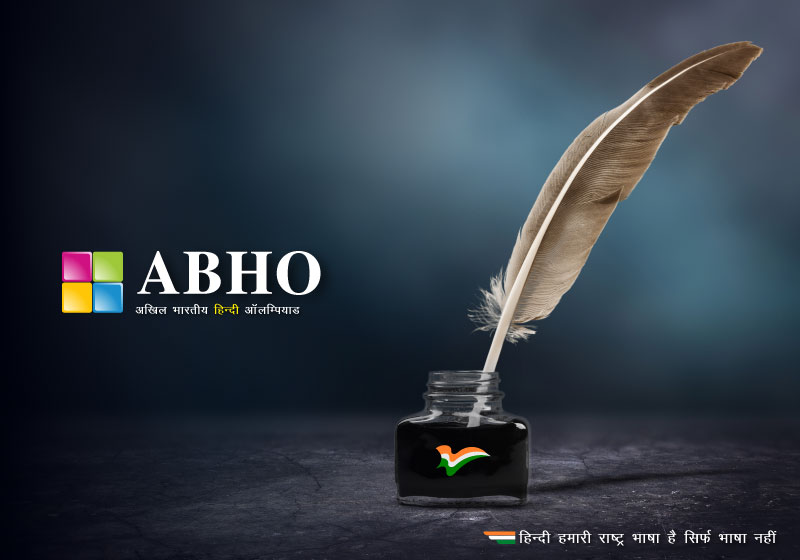
International Social Studies Olympiad
iSSO serves as a platform for students to demonstrate their grasp of diverse social studies concepts. It goes beyond mere rote memorization, challenging students to apply analytical and critical thinking skills.
Beyond academics, iSSO fosters a genuine interest in social studies by encouraging students to delve into current affairs, global issues, and the rich tapestry of global history. It seeks to cultivate a holistic understanding of the world, nurturing curiosity about different cultures and perspectives.
Participation in iSSO offers students invaluable opportunities for personal growth. It sharpens cognitive faculties, broadens cultural horizons, and refines analytical abilities. Ultimately, iSSO empowers students to navigate and comprehend the complexities of our interconnected world. In essence, iSSO serves as a conduit for students to test their acumen in social studies, fostering a deeper appreciation and understanding of the global community.
About Test Paper
The examination is being conducted for all classes from 1st to 10th with the following details.
For Classes 1-2: There will be 25 questions and the duration will be of 40 Minutes.
For Classes 3-5: There will be 30 questions and the duration will be of 40 Minutes.
For Classes 6-8: There will be 35 questions and the duration will be of 40 Minutes.
For Classes 9-10: There will be 40 questions and the duration will be of 50 Minutes.
The precise instructions for administering the test will accompany the question papers. All questions will be in an objective format, featuring multiple-choice answers. Notably, there is no negative marking system in place.
For every class, OMR answer sheets will be provided. Students are permitted to keep their question papers for reference, while the answer sheets will be collected and returned to the foundation for evaluation and scoring.
Sample Question Papers
Explore the comprehensive syllabus and sample test papers conveniently available on our website. Click the links below to access the syllabus and sample test papers tailored for each class. For book purchases, kindly reach out to your School Coordinator or proceed to book your order online today.
Chapter-wise Marking Scheme
Utilizing a chapter-wise marking scheme can enhance students' performance in SilverZone Olympiads
Class-1
| Section | Chapters | No. of Questions | Marks | Total Marks |
|---|---|---|---|---|
| All About Me | Body Parts Family Safety Rules Good Habits and Manner Good Touch and Bad Touch | 3 | 3.5 | 10.5 |
| My Needs | Food, Clothes and Shelter | 2 | 3.5 | 7 |
| My Community | School and Neighbourhood People Who Help Us | 2 | 3.5 | 7 |
| Our Country | National Symbols Festivals and celebrations | 2 | 3.5 | 7 |
| Our Surroundings | Air and Water Environment Plants and Animals | 3 | 3.5 | 10 |
| Settled Life | Transport and Communication | 2 | 3.5 | 7 |
| Earth and Sky | Sun and Moon Seasons Weather | 1 | 3.5 | 3.5 |
| Scholar’s Zone | Scholar’s Zone | 10 | 4.75 | 47.5 |
| Total No. of Questions: 25 | Total Marks: 100 |
Class-2
| Section | Chapters | No. of Questions | Marks | Total Marks |
|---|---|---|---|---|
| All About Me | Body Parts Family Safety Rules Good Habits and Manner Good Touch and Bad Touch | 3 | 3.5 | 10.5 |
| My Needs | Food, Clothes and Shelter | 2 | 3.5 | 7 |
| My Community | School and Neighbourhood Our Helpers Places of Worship | 2 | 3.5 | 7 |
| Our Country | National Symbols Great people Historical Monuments in India Festivals and celebrations | 2 | 3.5 | 7 |
| Our Surroundings | Air, Water and Land Environment | 3 | 3.5 | 10 |
| Settled Life | Time and Directions Transport and Communication | 2 | 3.5 | 7 |
| Earth and Sky | Universe Weather and Seasons | 1 | 3.5 | 3.5 |
| Scholar’s Zone | Scholar’s Zone | 10 | 4.75 | 47.5 |
| Total No. of Questions: 25 | Total Marks: 100 |
Class-3
| Section | Chapters | No. of Questions | Marks | Total Marks |
|---|---|---|---|---|
| All About Me | Body Family Safety Rules | 4 | 3 | 12 |
| My Needs | Food, Clothes and Shelter | 4 | 3 | 12 |
| Occupation | Community Helpers Agriculture | 2 | 3 | 6 |
| Our Country | Freedom Fighters Historical Monuments in India Festivals and celebrations Four Metrocities | 5 | 3 | 15 |
| The Story of Early Man | Story of Fire Invention of Wheel Growing Food | 2 | 3 | 6 |
| Our Environment | Air, Water and Land | 4 | 3 | 12 |
| Settled Life | Transport and Communication | 2 | 3 | 6 |
| Earth and Sky | Solar System Weather and Seasons | 2 | 3 | 6 |
| Scholar’s Zone | Scholar’s Zone | 5 | 5 | 25 |
| Total No. of Questions: 30 | Total Marks: 100 |
Class-4
| Section | Chapters | No. of Questions | Marks | Total Marks |
|---|---|---|---|---|
| Our Country | National Symbols Landscape and its people Our Heritage | 5 | 3 | 15 |
| Resources | Natural Vegetation and Soil Air and Water | 6 | 3 | 18 |
| Work and Play | Agriculture Industries Sports | 4 | 3 | 12 |
| Our Government | Fundamental Rights and Duties Public Services | 3 | 3 | 9 |
| Time and Directions | Time Mapping Neighbourhood | 2 | 3 | 6 |
| Settled Life | Transport and Communication | 2 | 3 | 6 |
| Earth and its Neighbours | Solar System Moon and Artificial Satellites Climate and Seasons | 3 | 3 | 9 |
| Scholar’s Zone | Scholar’s Zone | 5 | 5 | 25 |
| Total No. of Questions: 30 | Total Marks: 100 |
Class-5
| Section | Chapters | No. of Questions | Marks | Total Marks |
|---|---|---|---|---|
| History and Its Evidence | Freedom Struggles and Independence Important Dates Great Personalities and Achievers Inventions and Discoveries | 7 | 3 | 21 |
| Governance | Structure of Government Fundamental Rights and Duties United Nations and Other Regional organisations | 4 | 3 | 12 |
| Earth and its Inhabitants | Landforms Weather and Climatic Zones Map Natural Disaster and Mitigation | 4 | 3 | 12 |
| Heritage | Music styles and Dance forms World Heritage Sites Handicrafts | 3 | 3 | 9 |
| Environment | Pollution Conservation of Environment Healthy Lifestyle | 4 | 3 | 12 |
| Settled Life | Transport and Communication Migration | 3 | 3 | 9 |
| Scholar’s Zone | Scholar’s Zone | 5 | 5 | 25 |
| Total No. of Questions: 30 | Total Marks: 100 |
Class-6
| Section | Chapters | No. of Questions | Marks | Total Marks |
|---|---|---|---|---|
| History | Timeline and Sources of History India, That Is Bharat The Beginnings of Indian Civilisation India's Cultural Roots | 10 | 2.5 | 25 |
| Geography | Locating Places on Earth Oceans and Continents Landforms and Life Unity in Diversity, or 'Many in the One' | 10 | 2.5 | 25 |
| Political and Social Life | Family and Community
Governance Rural Local Government Urban Local Government The Value of Work Economic Activities Around Us | 10 | 2.5 | 25 |
| Scholar’s Zone | Scholar’s Zone | 5 | 5 | 25 |
| Total No. of Questions: 35 | Total Marks: 100 |
Class-7
| Section | Chapters | No. of Questions | Marks | Total Marks |
|---|---|---|---|---|
| History | Introduction: Tracing Changes through a Thousand Years Kings and Kingdoms 12th to 15th Centuary The Mughals (16th to 17th Century) Tribes, Nomads, and Settled Communities Devotional Paths to the Divine The Making of Regional Cultures Eighteenth-Century Political Formations | 10 | 2.5 | 25 |
| Geography | Environment Inside Our Earth Our Changing Earth Air Water Human-Environment Interactions – The Tropical and the Subtropical Region Life in the Deserts | 10 | 2.5 | 25 |
| Political and Social Life | On Equality Role of the Government in Health How the State Government Works Growing up as Boys and Girls Women Change the World Understanding Media Markets Around Us A Shirt in the Market | 10 | 2.5 | 25 |
| Scholar’s Zone | Scholar’s Zone | 5 | 5 | 25 |
| Total No. of Questions: 35 | Total Marks: 100 |
Class-8
| Section | Chapters | No. of Questions | Marks | Total Marks |
|---|---|---|---|---|
| History | How, When and Where From Trade to Territory: The Company Establishes Power Ruling the Countryside Tribals, Dikus and the Vision of a Golden Age When People Rebel 1857 and After Civilising the “Native”, Educating the Nation Women, Caste and Reform The Making of the National Movement: 1870s – 1947 | 10 | 2.5 | 25 |
| Geography | Resources Land, Soil, Water, Natural Vegetation and Wildlife Resources Agriculture Industries Human Resources | 10 | 2.5 | 25 |
| Political and Social Life | The Indian Constitution Understanding Secularism Parliament and the Making of Laws Judiciary Understanding Marginalisation Confronting Marginalisation Public Facilities Law and Social Justice | 10 | 2.5 | 25 |
| Scholar’s Zone | Scholar’s Zone | 5 | 5 | 25 |
| Total No. of Questions: 35 | Total Marks: 100 |
Class-9
| Section | Chapters | No. of Questions | Marks | Total Marks |
|---|---|---|---|---|
| History | The French Revolution Socialism in Europe and the Russian Revolution Nazism and the Rise of Hitler Forest Society and Colonialism Pastoralists in the Modern World | 8 | 2 | 16 |
| Geography | India-Size and Location Physical Features of India Drainage Climate Natural Vegetation and Wildlife Population | 8 | 2 | 16 |
| Political and Social Life | What is Democracy? Why Democracy? Constitutional Design Electoral Politics Working of Institutions Democratic Rights | 8 | 2 | 16 |
| Economics | The Story of Village Palampur People as Resource Poverty as a Challenge Food Security in India | 6 | 2 | 12 |
| Scholar’s Zone | Scholar’s Zone | 10 | 4 | 40 |
| Total No. of Questions: 40 | Total Marks: 100 |
Class-10
| Section | Chapters | No. of Questions | Marks | Total Marks |
|---|---|---|---|---|
| History | The Rise of Nationalism in Europe Nationalism in India The Making of a Global World The Age of Industrialisation Print Culture and the Modern World | 8 | 2 | 16 |
| Geography | Resources and Development Forest and Wildlife Resources Water Resources Agriculture Minerals and Energy Resources Manufacturing Industries Lifelines of National Economy | 8 | 2 | 16 |
| Political and Social Life | Power- Sharing Federalism Gender, Religion and Caste Political Parties Outcomes of Democracy | 8 | 2 | 16 |
| Economics | Development Sectors of the Indian Economy Money and Credit Globalisation and the Indian Economy Consumer Rights | 6 | 2 | 12 |
| Scholar’s Zone | Scholar’s Zone | 10 | 4 | 40 |
| Total No. of Questions: 40 | Total Marks: 100 |
The raw score is computed by multiplying each correct answer by its corresponding base marks and summing the results. In mathematical terms: Raw Score = SUM (correct answer × subsequent base Marks).
Total Marks CalculationTotal Marks are determined by adding the raw score to the sum of the weightage of correct answers. Each question carries an additional weightage, starting from .0001 and increasing incrementally (.0002, .0003, and so forth). For instance, Question No. 1 has a weightage of .0001, Question No. 2 has .0002, and so on. This weightage is utilized to resolve ties when calculating Class/Zonal/Olympiads ranks.
Olympiad RankThis encompasses all students from India and abroad belonging to the same class.
Class RankThis encompasses all students from various sections/divisions of the same class within the same school.
Prizes, Dates and Venue
| Rank. No. | Award |
|---|---|
| 1st Olympiad rank | The 1st International Olympiad rank holder in each class will receive a Prize of Rs. 10,000/-. |
| 2nd Olympiad rank | The 2nd International Olympiad rank holder in each class will receive a Prize of Rs. 7,500/-. |
| 3rd Olympiad rank | 3rd Olympiad rank The 3rd International Olympiad rank holder in each class will receive a Prize of Rs. 5,000/-. |
| 4th to 10th Olympiad rank | 4th to 10th Olympiad rank Rank holders from 4th to 10th position in each class will be awarded Gift Certificates of varying values. |
| 11th to 25th Olympiad rank | 11th to 25th Olympiad rank Rank holders from 11th to 25th position in each class will be awarded Gift Certificates of varying values. |
| 26th to 500th Olympiad rank | 26th to 500th Olympiad rank Rank holders from 26th to 500th position in each class will receive the Topper Achievement Certificate. |
| 1th, 2th and 3rd Zonal Rank | 1st, 2nd, and 3rd Zonal Rank The 1st, 2nd, and 3rd Zonal Rank holders across all classes will be honored with Medals of Excellence. |
| 1th, 2th and 3rd State Rank | 1st, 2nd, and 3rd State Rank The 1st, 2nd, and 3rd State Rank holders across all classes will be presented with Medals of Excellence. |
| 1st, 2nd 3rd Class Topper | 1st, 2nd, and 3rd Class Topper The 1st, 2nd, and 3rd Class Toppers in each school will be bestowed with Medals of Excellence, provided the topper achieves a minimum of 50% marks. Excellence, provided the topper obtains at least 50% marks |
| All | All participants will be awarded Participation Certificates reflecting their Class/Zonal/State/Olympiad Ranks and Marks. |
Up to 10 Students with the Same Rank: In this scenario, the award amount will be divided equally among the winners, and each recipient will be honored with a Symbolic Golden Medal of Excellence in the relevant category along with a Certificate.
For 11 or More Students with the Same Rank: Instead of a shared award, each winner will receive a gift certificate coupon, along with a Medal of Excellence in the relevant category and a Special Achievement Certificate.
1. Medals for Class Toppers:
The top three rank holders in each class will be presented with Medals of Excellence. To qualify, students must achieve a minimum score of 50%.
2. Chapter-wise Performance Analysis Report:Every participant will receive a comprehensive Chapter-wise Performance Analysis Report. This detailed report provides insights into the student's exam attempts, including:
The Question-wise Performance Analysis Report consists of four sections:Section A – Marks and rank achieved in Class/Zonal/Olympiad ranks.
Section B – Chapter-wise performance score.
Section C – Percentile score for comparison with other students at the Zone and international levels.
Section D –Percentage score analysis compared to Class, zone, and international levels. The objective of this report is to provide students and their parents with a thorough analysis of the student's strengths and areas for improvement. It allows students to understand their performance both individually and in comparison to thousands of other participants.
Each winner is entitled to one award per exam, receiving the higher-level award only. For example, international top three rank holders will receive awards based on their international ranks, and any awards based on their Zonal ranks will be passed to the next rank holder. Similarly, if a Zonal award winner also qualifies for a class award, the class award will be given to the next rank holder.
Important Dates
The Result of the iio will be available at www.silverzone.org in the month of Feb/March.
The venue of the examination will be school only.
Zone/State Categorization
To streamline operations and facilitate various functions, all states and Union Territories in India, along with participating international countries, have been organized into the following zones. This categorization serves the following purposes:
Determining zone toppers for performance-based awards.
| STATE | |
|---|---|
| North Zone | Delhi NCR, Haryana, Punjab, Himachal Pradesh, Uttarakhand, J&K, Ladakh, Chandigarh, Rajasthan, Uttar Pradesh |
| West Zone | Maharashtra, Goa, Gujarat, Daman & Diu, Dadara & Nagar Haveli, Madhya Pradesh |
| East Zone | West Bengal, Bihar, Jharkhand, Odisha, Assam, Arunachal Pradesh, Tripura, Sikkim, Meghalaya, Mizoram, Nagaland, Manipur, Chhattisgarh |
| South Zone | Tamil Nadu, Karnataka, Kerala, Telangana, Puducherry, Lakshadweep, Andhra Pradesh, Andaman & Nicobar |
| International Zone | All countries except India |
Sample Answer Sheet (PDF)
Unlock the Perfect Answer Sheet: Click below for Your Free PDF Download!
Sample Answer Sheet (PDF)
Study Material
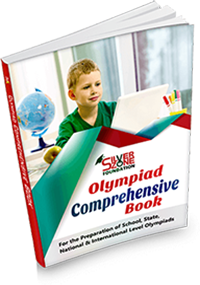
OLYMPIAD COMPREHENSIVE BOOK
SilverZone Comprehensive Books provide an exceptional value to the students for cracking Olympiad exams as they contain questions that enhance the participant’s ability to think and reason abstractly. Comprehensive Books are remarkable for gaining the knowledge required to crack any competitive exam with its concise material and engaging topics.
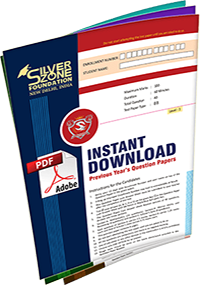
INSTANT DOWNLOAD PAST YEARS’ QUESTION PAPERS
Instantly downloading the Past Years’ Question Papers benefit the students to quickly gain access and become familiar with the SilverZone Olympiad exam pattern. The students can practice and understand the syllabus with ease, ensuring they achieve the highest marks in the Olympiad. The PDF contains questions as well as answers with detailed explanations.Salient Features of the Past Years’ Question Papers
Read More
Olympiads 2025-26






